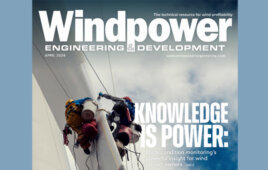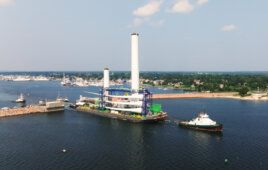By David Clark, CMS Wind
About 50% of drivetrain failures are in the generator, and they are predictable by months with the right detection. The failures are grouped into three specific categories: bearing-related, electrical-related and misalignments. We’ve already discussed electrical fluting and misalignments, so now let’s talk about bearing failures.
How specific is vibration? How early is the detection? Vibration will specifically detect each of the four bearing subcomponent defect frequencies. The outer race, inner race, rolling element and cage defect frequencies each have distinctive vibration frequencies identifiable in various amplitudes and in specific vibration measurements as the bearing fails. Detection happens so early that it is prior to visible wear indicators. Early detection also allows for corrective action before visible and non-corrective actions can be taken. If a properly configured online system is used, this can be done regularly, remotely and effectively.
Vibration condition monitoring is exceptional at bearing failure detection — so exceptional that some bearing manufacturers use vibration condition monitoring as a quality control measure. Depending upon the condition monitoring configuration, sensor, measurement set-up and analysis, it is common in the wind market to see six to nine months from the beginning of the failure to complete failure. If corrective action is performed, lubrication (or reduction of lubrication) and seal replacement can extend this time frame significantly longer.
The generator bearing failure most commonly seen in the past 20 years involves a simple bearing degradation caused by lack of lubrication or over lubrication. Vibration first detects the defects early enough to allow the end user time to lubricate the bearing and avoid an imminent bearing failure.
By correcting the lubrication issue early, one can add to the life of the bearing. I’ve found that it costs $80,000 for a generator replacement vs. $12,000 for an up-tower repair with a six- to nine-month lead time. Again, early detection is important because the vibration caused by unlubricated bearing metal-on-metal contact can be corrected prior to micropitting progressing into macropitting and eventually shortening bearing life. By the time this is seen in temperature, there isn’t a corrective option.
Understanding how bearings fail and how vibration analysis/condition monitoring measures these failures is of obvious importance. Acceptance testing and post repair/replacement are important times to measure these bearing degradations. End of warranty and due diligence are also important times to know specifically what is failing. This knowledge is powerful for life extension, estimating repair costs, inventory, labor estimates, crane call outs and maximizing production.
Filed Under: Featured




